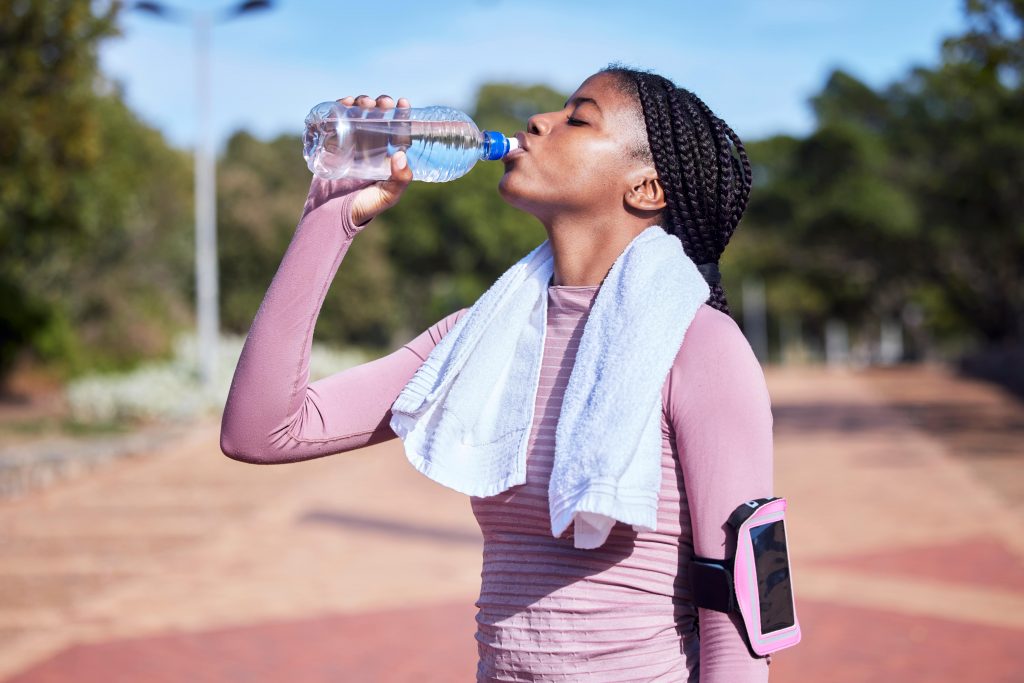In today’s busy world, where health and happiness are important, fitness blogs have become a popular and useful way for people to get advice on what to eat and how to work out. These blogs have done very well because they fill a need and help people with common health and exercise issues.
Fitness blogs have helpful pieces with tips and information from experts to help people reach their fitness goals. Fitness bloggers write a lot of different kinds of posts that are geared toward fitness fans. They cover everything from healthy meals to workout plans to mental health tips.
Another important thing that helps fitness blogs stay popular is having a clear goal. By focusing on a certain issue or group of people, they get the interest of viewers who are looking for help and motivation on their exercise journey. Because these blogs are focused, they can go into great detail about a subject and give useful information and suggestions.
Fitness writers build their credibility as experts in the fitness business by carefully choosing what to write on their blogs. This makes their viewers trust and stick with them. Because they take a different approach and are dedicated to supporting a healthy lifestyle, these blogs have become popular places for people to get help and motivation on their way to health.
Nutrition Tips for Athletes
Nutrition is an important part of performing well in sports, and players are always looking for ways to improve their food and nutrition. Athletes use diet tips to make sure they are giving their bodies the right food and nutrients they need, whether they are getting ready for a race, healing from hard workouts, or just staying healthy in general. Nutrition tips for athletes cover a wide range of topics that are specific to the needs of people who are physically active on a regular basis. These topics include advice on macronutrient ratios, meal planning, and supplements, as well as advice for endurance athletes, strength trainers, and team sports players. A balanced and healthy diet is important for keeping your body healthy and supporting your best physical and mental health. These tips not only help players improve their performance, but they also improve their general health. Athletes can make smart choices about what they eat and improve their performance by getting information and tools from nutrition pros and experts.

Meal Plans for Optimal Performance
Meal plans are a very important part of helping players do their best. For muscle growth and good health in general, you need to eat right. Athletes can improve their performance and reach their fitness goals by giving their bodies the right foods at the right time.
Athletes should eat a variety of macronutrients, such as good fats, carbs, and proteins, in order to stay healthy. The body gets its energy from carbohydrates, and proteins help muscles grow and heal. Healthy fats help the body make hormones and lower inflammation.
When you eat is also very important. Within two to three hours of a workout or race, athletes should try to eat a healthy meal or snack that includes all three macronutrients. This gives the body enough time to break down and absorb the nutrients, which makes sure that you have enough energy to work out. For muscle repair, it’s also important to eat a protein-rich meal or snack within 30 minutes of working out.
Different kinds of players can have their own sample meal plans made just for them. For example, endurance runners may need to eat more carbohydrates to keep their energy levels up over time. Strength players may want to eat more protein to help their muscles grow and heal. A mix of carbs, proteins, and good fats might help players in team sports get the energy they need and help their muscles recover.
Healthy Eating Habits for Athletes
When it comes to efficiency and health, players’ eating habits are very important. Nutritionally rich foods give you the fuel and nutrients you need to perform at your best, helping your muscles heal, your body make energy, and your immune system work well.
It’s important for athletes to eat a range of foods that are high in nutrients. For muscle building and repair, you need to eat lean foods like chicken, fish, tofu, and beans. Whole grains, fruits, and veggies all contain complex carbohydrates that give you energy that lasts for a long time and help your glycogen stores. Avocados, nuts, and olive oil are all good sources of healthy fats that help your body make hormones and reduce inflammation.
On the other hand, you should stay away from prepared foods. Most of the time, these foods have a lot of extra sugars, bad fats, and fake ingredients, and they don’t have much nutritional value. Instead, players should focus on eating whole foods that have been cooked as little as possible and are naturally high in nutrients.
Athletes also need to know how to properly feed their bodies. This means having a healthy snack or meal with all the macronutrients you need two to three hours before you work out and a protein-rich snack or meal within 30 minutes of working out. This timing lets your body digest and absorb nutrients best, giving you enough energy during workouts and helping your muscles heal properly afterward.
What Foods to Avoid During Training
Athletes should stay away from certain things while they are training because they can hurt their performance. Some of these foods are:
- Foods that are processed and high in sugar: Candy, pop, and processed snacks are all high in added sugar, which can make blood sugar levels change quickly. This can make you lose energy quickly during workouts, which can hurt your performance.
- Fatty and fried foods: It’s hard to digest fatty and fried foods, like fast food and greasy snacks, which can make training uncomfortable. Also, these foods often have a lot of calories and can make you gain weight, which can make it harder to do well in sports.
- Foods that are hot and acidic: Foods that are hot and acidic, like citrus fruits and hot peppers, can give you heartburn and bloating while you work out. These pains can keep players from training at their best by getting in the way.
- Consuming Too Much Fiber: Fiber is an important part of a healthy diet, but eating too many high-fiber foods before working out can make your stomach hurt with gas and bloating. These discomforts can make it harder to do well in sports.
- Alcohol: Alcohol can make you lose water and make it harder to coordinate your movements, respond quickly, and make decisions. It can also make sleep less restful, which is important for healing and performing at your best in sports.
By staying away from these things while they are training, players can get more energy, handle food better, and perform better overall. It is important to focus on a diet of whole, nutrient-dense foods that help you reach your health and fitness goals.
The Importance of Hydration for Athletes
Athletes need to stay hydrated to keep up their best efficiency and help their bodies heal. Staying hydrated is an important part of many bodily processes, such as keeping the body’s temperature stable, moving nutrients around, and keeping joints smooth.
The body loses water through sweating when it works out. Dehydration can happen if these fluids are not replaced properly. Dehydration hurts physical ability in more than one way. It can cause less stamina, cramps in the muscles, dizziness, and tiredness. Dehydration also hurts brain function, making it harder to make decisions and respond quickly.
Also, being dehydrated makes it harder for the body to heal properly after exercise. Getting enough water is important for replacing glucose stores in muscles and getting rid of cellular waste. Without enough water, the healing process is slowing down, which makes muscle pain and a later recovery more likely.
Athletes should drink water before, during, and after exercise to stay refreshed. Water is usually enough for modest exercise, but if you work out hard or for a long time, you might need a drink that replaces electrolytes. It is also important to think about the weather and change how much water you drink based on that.

Training Tips for Athletes
When it comes to performing at their best, players know how important it is to train properly. Whether you are an experienced player or just starting to get fit, using the right training tips can make a big difference in how well you can do in sports. This article has tips for players that will help them get stronger, last longer, and do better overall. Athletes can get the most out of their training by making a personalized workout plan and doing cross-training routines. Focusing on proper form, rest and healing, and making attainable goals are also important parts of training that should not be ignored. Fans of sports can reach their health goals and improve their skills by using these training tips.
Warm-Up Exercises Before Training Sessions
Warm-up routines are very important for keeping you from getting hurt and improving your ability. They are important for getting the body ready for a workout because they make the muscles more flexible and increase blood flow to them.
During a warm-up exercise, your blood flow goes up, bringing oxygen and nutrients to your muscles. This helps them work at their best. This lowers the chance of strains, pulls, or tears in muscles that can happen when you work out when your muscles are cold.
Warm-up routines also help you become more flexible by slowly stretching your muscles, tendons, and joints. Because you are more flexible, you can move through a wider range of motion during your workout. This helps you do better and lowers your risk of getting joint injuries.
Hip circles, arm circles, high knees, walking lunges, and leg swings are all active stretches and movement exercises that players can do as part of their warm-up. These moves use controlled, steady motion to help warm up and engage muscles, getting them ready for the toughness of the workout.
Make warm-up routines a priority to avoid getting hurt and get the most out of your workouts. Warm-ups make sure that your workout is safe and effective by getting the blood flowing, making you more flexible, and getting your body ready for physical exercise.
Strength Building Exercises to Improve Performance
Strength training is an important part of an athlete’s fitness routine because it can help them reach their fitness goals and improve their performance. Adding a number of strength-building workouts to your routine can help you build muscle and get stronger, which will help you do better in sports.
The squat is a good workout that works many muscle groups, like the hips, legs, and quads. Squats not only make your legs stronger, but they also make your core stronger and your balance better all around.
Deadlifts are also good for you because they work the muscles in your lower back, hips, and legs. When you do deadlifts, you build power and rapid strength, which are important for sports and other activities that need quick moves.
A strength training routine can include more than just the squat and deadlift. It can also include lunges, pull-ups, shoulder presses, and bench presses. These routines work out a variety of muscles, which helps muscles grow overall and improves physical performance.
Adding strength-building exercises to your workout routine can help your muscles last longer, give you more power, and lower your risk of getting hurt. Athletes can improve their strength and ability by doing these workouts daily, which will help them dominate their sports.
The Benefits of Cross-Training for Athletes
Adding a number of workouts and tasks to an athlete’s training routine is called cross-training. It can help them get fitter, avoid injuries, perform better, and stay motivated.
To begin, cross-training makes you fitter all around by working out different energy systems and muscle parts. Swimming, riding, and yoga are some things that players can do in addition to their main sport to improve their physical fitness, muscle strength, flexibility, and balance.
Cross-training also helps keep players from getting overuse injuries, which happen when they do the same moves over and over again and put stress on the same muscles and joints. Diversifying their training can help athletes avoid overworking or hurting certain parts of their bodies, which can speed up healing and keep them from getting hurt.
Cross-training not only keeps you from getting hurt, but it also makes you better at sports. Athletes can improve their general strength, learn new skills, and improve their balance by doing a variety of exercises. In addition to better success in their main sport, this can mean more quickness, strength, and speed.
Lastly, cross-training keeps players motivated by giving them a change of pace during their workouts. Instead of getting bored with the same workouts, adding new ones like yoga or swimming can keep things interesting. This variety can spark new interest and commitment, which keeps players interested and inspired to keep training.
Overall, cross-training is a good way for players to get fitter, avoid overuse problems, improve their performance, and keep themselves motivated. To get a more complete and well-rounded physical growth, players can mix up their training by doing a variety of workouts and activities.
Cardio Workouts to Increase Endurance
Cardio workouts are very important for building stamina and improving general sports ability. To reach these goals, athletes can use different kinds of cardio workouts as part of their training.
Running is a standard fitness exercise that works well and helps build heart health. It works on a lot of different muscle groups, makes your lungs stronger, and increases your endurance. Cycling is another great choice. It is low-impact and great for players who have trouble with their joints. You can do it inside or outside, and it makes your legs stronger and your heart healthy.
Swimming works out your whole body and is easy on your knees. It works all the major muscle groups. It makes the heart and lungs stronger, increases stamina, and improves physical health. High-Intensity Interval Training, or HIIT, is a quick way to get your heart rate up by switching between short bursts of hard exercise and rest times. It makes you stronger, burns calories, and speeds up your metabolism.
Going to aerobics lessons, either in person or online, can be a great way to get your heart rate up, build fitness, and have fun. Most of the time, these classes include moves that look like dance steps, cardio workouts, and upbeat music.
Including different types of cardio workouts in an athlete’s schedule keeps things interesting and challenges the body in new ways. Regular exercise training not only makes you stronger, but it also makes your heart healthier, speeds up your metabolism, and improves your general performance.
Stretching Techniques to Reduce Injury Risk
Stretching is an important part of any workout because it lowers the risk of injury and makes muscles stronger and more flexible. Using different types of stretching during your workouts can really help your fitness journey as a whole.
When you do a dynamic stretch, you move through your whole range of motion slowly and steadily. These stretches get your body warmed up, get more blood to your muscles, and make it easier to move your joints. Arm swings, walking lunges, and leg swings are all types of active exercises.
Static stretches, on the other hand, involve keeping a stretch for a set amount of time, usually 15 to 60 seconds. These moves help make muscles longer and more flexible. Some common motionless stretches are calf stretches, hamstring stretches, and quadriceps stretches.
Proprioceptive Neuromuscular Facilitation (PNF) stretching is a more advanced method that includes tensing and loosening the muscles at the same time. By focusing on certain muscle parts, this method helps improve flexibility and muscle power. People often use tension bands or do PNF stretching with a person.
Rolling on foam is another good way to avoid getting hurt. Self-myofascial release techniques like foam rolling can help loosen up tight muscles and get rid of knots. Foam rolling can make you more flexible, improve blood flow, and ease muscle pain by rolling over tight or sore muscles.
Adding these stretching exercises to your workout routine can make you less likely to get hurt, make your muscles stronger, and make you more flexible. Always warm up before stretching, and if you need help, talk to an exercise expert.
You can learn more about sports and fitness blogs at https://ffools.com/. These blogs are full of great diet and training tips that will help you do better and feel better.

Conclusion
To sum up, anyone who wants to reach their fitness goals and live a better life should read the best sports and fitness blogs for training and diet advice. These blogs give you fresh ideas and useful information that can make your exercise journey much better. If you follow these blogs, you can get help from experts, read interesting pieces, and get useful tips on mental health, training, and diet. To change and get the most out of your fitness routine, you need to know about the newest trends in the fitness business. These blogs have a lot of useful information and tools that can help you stay encouraged, informed, and inspired on your fitness path. To stay on top of the game and reach your health and fitness goals, read these top sports and fitness blogs.


